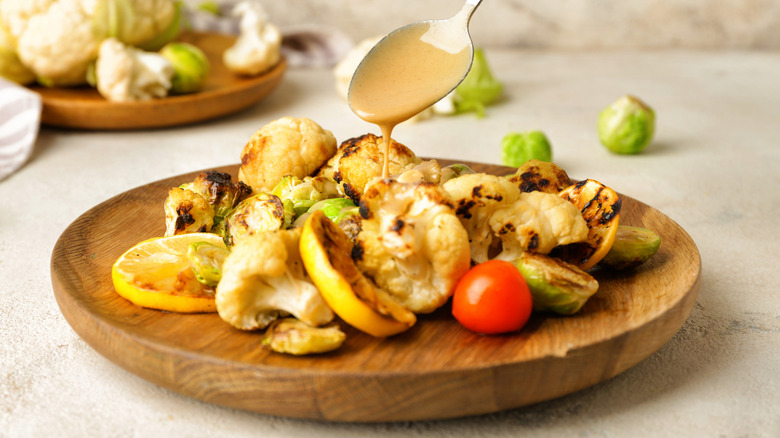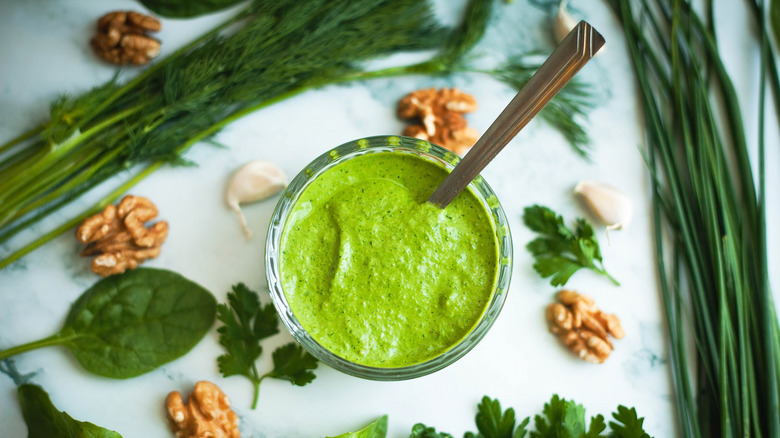Sauce Vs Dressing: Here's What Makes Them So Different
Proper cooking technique and experimenting with spices and seasonings are a surefire way to make delicious food at home, but a good sauce or dressing really takes your meals over the top. It adds moisture, texture, and a fresh layer of flavor on top of all those tastes you developed while cooking. But what's the difference between a sauce and a dressing? Well, much like that old rule about squares and rectangles, a dressing is a type of sauce, but not all sauces are dressings.
Dressings comprise a flavorful liquid usually made out of a base of oil and vinegar — or, occasionally, a heavier base of mayonnaise or yogurt — that is used to dress salads and fresh vegetables. Sauces, on the other hand, can be based on rich liquids like broth, wine, or lemon juice; Or, they can be made out of puréed fruit and veggies, as in a tomato sauce. Dressings are typically not cooked, while sauces can be either cooked or raw, depending on the meal in which they're used.
The sauce vs dressing showdown
Some people differentiate sauce from dressing by saying that sauces need to be cooked, but this isn't always the case. Although culinary staples like the five French mother sauces (béchamel, velouté, Espagnole, hollandaise, and tomato) are cooked, sauces like salsa and pesto are not.
The best way to define a sauce is as a flavorful liquid or colloid (Think salsa and thick yogurt-based sauces), used as a flavor enhancer. You may have discovered the cooking sauces you can make at home, and simmered meatballs in marinara or slow-cooked a pot roast in au jus gravy; These sauces can even serve as a dip, or a drizzle on top of your finished meal. This is why, when it comes to condiments versus sauces, ketchup and hot sauce are considered sauces.
Dressings are sauces in that they are a flavor-enhancing liquid, but they are always prepared separately from the main meal and are served as an accompaniment. Typically, the term dressing is almost always used in reference to a condiment that is either mixed in or drizzled on top of a salad. Dressings do not get cooked, and are typically made out of an emulsion of oil and vinegar, for a vinaigrette; or with a creamy base of yogurt or mayonnaise, like in a ranch or Caesar dressing.
These dressings, of course, are very different from the synonymous word for stuffing, which is made out of seasoned bread cubes. Dressing is actually the correct term for when the bread is baked alongside the turkey — not stuffed inside the cavity like stuffing would be — but that is a whole other discussion.

